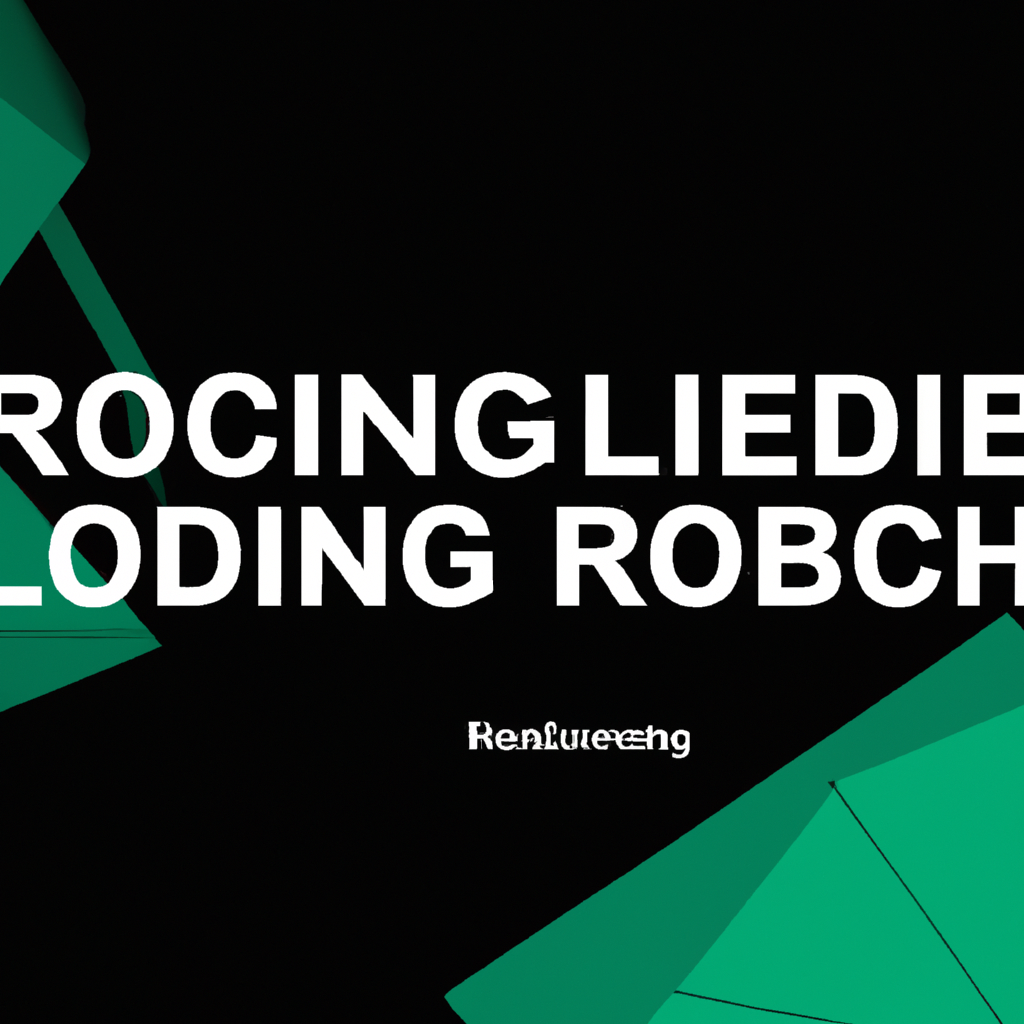Investigating the Applications of Reinforcement Learning in Robotics
Table of Contents
Investigating the Applications of Reinforcement Learning in Robotics
Abstract:
In recent years, there has been a growing interest in the application of reinforcement learning (RL) algorithms in the field of robotics. RL, a subfield of machine learning, focuses on developing algorithms that enable an agent to learn optimal behaviors through interactions with the environment. This article aims to investigate the various applications of RL in robotics, highlighting both the new trends and the classic approaches. By examining the challenges and potential solutions, this article provides insights into the potential of RL as a powerful tool for enhancing robotic capabilities.
# 1. Introduction:
The field of robotics has witnessed significant advancements in recent decades, leading to the development of robots with increasingly complex functionalities. However, the traditional approach to programming robots, based on explicit rules and predefined behaviors, often falls short when confronted with dynamic and unpredictable environments. This is where RL comes into play, offering a promising alternative to address these challenges.
# 2. Reinforcement Learning Basics:
Reinforcement learning is a learning paradigm where an agent learns to navigate an environment by receiving feedback in the form of rewards or penalties. The agent interacts with the environment, takes actions, and receives feedback that helps it learn the optimal policy to achieve a given goal. RL algorithms employ a trial-and-error approach to iteratively improve the agent’s performance.
# 3. Applications of Reinforcement Learning in Robotics:
## 3.1. Autonomous Navigation:
One of the key applications of RL in robotics is autonomous navigation. RL algorithms can enable robots to learn how to navigate through complex environments, avoiding obstacles and reaching a target destination. By training the robot in simulated environments, RL can help overcome the limitations of traditional navigation techniques, which often struggle with dynamic or cluttered environments.
## 3.2. Manipulation and Grasping:
Robotic manipulation, particularly grasping objects with complex shapes, has been a challenging task. RL offers a promising approach to teach robots how to grasp objects by trial and error. By providing rewards for successful grasps and penalties for failed attempts, RL algorithms can enable robots to learn effective grasping strategies. This ability is crucial for robots to perform tasks such as assembly, pick-and-place operations, and even household chores.
## 3.3. Task Planning and Control:
RL can also be applied to optimize task planning and control in robotics. By formulating tasks as reinforcement learning problems, robots can learn optimal policies to accomplish complex tasks involving multiple steps. This approach can be particularly useful in domains where explicit programming of task-specific behaviors becomes infeasible due to the complexity of the task or the environment.
# 4. Challenges in Reinforcement Learning for Robotics:
Despite the potential of RL in robotics, several challenges need to be addressed for its successful application:
## 4.1. Sample Efficiency:
RL algorithms typically require a large number of interactions with the environment to learn optimal policies. In robotics, this can be time-consuming and costly. Addressing the sample efficiency problem is crucial for real-world deployment of RL algorithms in robotics.
## 4.2. Generalization:
Robotic systems are often required to operate in a variety of environments. Ensuring that RL algorithms can generalize their learned policies to new environments is crucial for their practical applicability. Techniques such as transfer learning and domain adaptation can help overcome this challenge.
## 4.3. Safety and Robustness:
In safety-critical applications, ensuring the safety and robustness of RL-based robotic systems is essential. RL algorithms need to be trained with safety constraints to prevent catastrophic failures. Techniques such as safe exploration and learning from human demonstrations can help address these concerns.
# 5. Future Directions and Emerging Trends:
In recent years, several advancements and emerging trends have been observed in the application of RL in robotics:
## 5.1. Meta-Learning:
Meta-learning, also known as “learning to learn,” is an emerging trend in RL. It focuses on developing algorithms that can quickly adapt to new tasks or environments based on prior experience. Meta-learning holds great potential for robotics, where the ability to quickly learn new tasks can significantly enhance the versatility of robots.
## 5.2. Multi-Agent Reinforcement Learning:
Multi-agent reinforcement learning (MARL) explores the interactions and coordination among multiple agents in an environment. This area has great relevance in robotics, where multiple robots often need to collaborate to achieve a common goal. MARL can enable robots to learn how to cooperate, communicate, and coordinate their actions effectively.
## 5.3. Hierarchical Reinforcement Learning:
Hierarchical reinforcement learning (HRL) focuses on learning policies at multiple levels of abstraction. This approach can help robots learn complex tasks by decomposing them into simpler sub-tasks. HRL has the potential to enhance the efficiency and adaptability of robotic systems by enabling them to learn and generalize complex behaviors more effectively.
# 6. Conclusion:
Reinforcement learning has emerged as a powerful tool for enhancing robotic capabilities. By enabling robots to learn optimal behaviors through trial and error, RL opens up new possibilities for autonomous navigation, manipulation, task planning, and control. However, challenges such as sample efficiency, generalization, and safety need to be addressed for widespread adoption of RL in robotics. With the emergence of meta-learning, multi-agent RL, and hierarchical RL, the future of RL in robotics looks promising. As researchers continue to explore and innovate in this field, we can expect robots to become increasingly versatile and capable in a wide range of applications.
# Conclusion
That its folks! Thank you for following up until here, and if you have any question or just want to chat, send me a message on GitHub of this project or an email. Am I doing it right?
https://github.com/lbenicio.github.io

